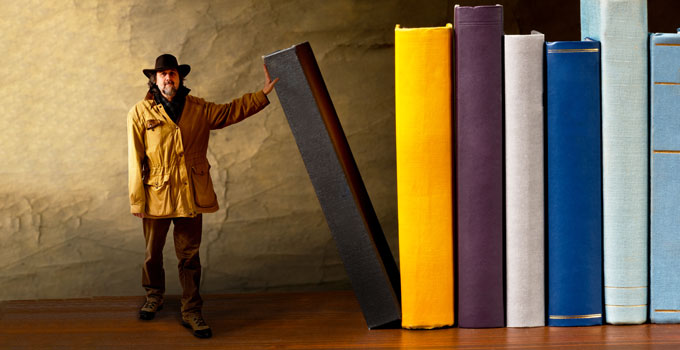How to select a book binding

Bookbinding is essentially the way the interior pages, known as the ‘book block’, are attached to the outer cover. Printers can use a range
of different bindings to attach this block to your outer cover, and so before you can have a printed proof made, you’ll need to decide which
binding type you’d like to use. With POD, you have four options to choose from: Paperbacks - perfect bound/saddle stitch or
Hardbacks - casebound/dust jacket. Check our calculator
to make sure that the option you go for is available for your chosen trim size.
Perfect bound
Printers make a perfect bound book by folding a thick paper cover sheet around your block of printed interior pages. Then they apply a strong
glue down the inside edge to hold the two together. Most paperback books you see sold commercially now are perfect bound - it is fast and cheap.
The only drawbacks are that the glue used will prevent your book from laying entirely flat, a gutter must be left white on the inside to allow
the glue to adhere and if forced open too hard the glue on the spine can snap.
Saddle stitch
Saddle stitch is simply a fancy way to describe stapling. If a printer saddle stitches your book, they will print your pages, fold them, and
then stack them open at their center spread. This is the most basic and cheap of all binding methods. It is great for very small volumes down
to as few as eight pages. However saddle stitch only works for books of up to about 64 pages. The books tend to have a limited lifespan and
have dwindled in popularity.
Casebound
A casebound hardback is essentially the same as a perfect binding, but instead of a floppy paper cover, your book will be thicker and more
rigid with boards to give the cover extra support. The board is wrapped in a larger printed paper layer. This is a great choice for larger
books, reference books, photo books, art books, anything that benefits from added strength and structure of something to hold. Case binding
is much more expensive than perfect binding. Production costs will obviously be higher, and the extra weight will add costs to your shipping.
Dustjacket
Unlike other binding types, dust jacketed books are strangely divisive. Some people love the traditional feel they give. Others find them
slippery and unneccessary, they lose the paper covers and are left with a plain, anonymous cover.